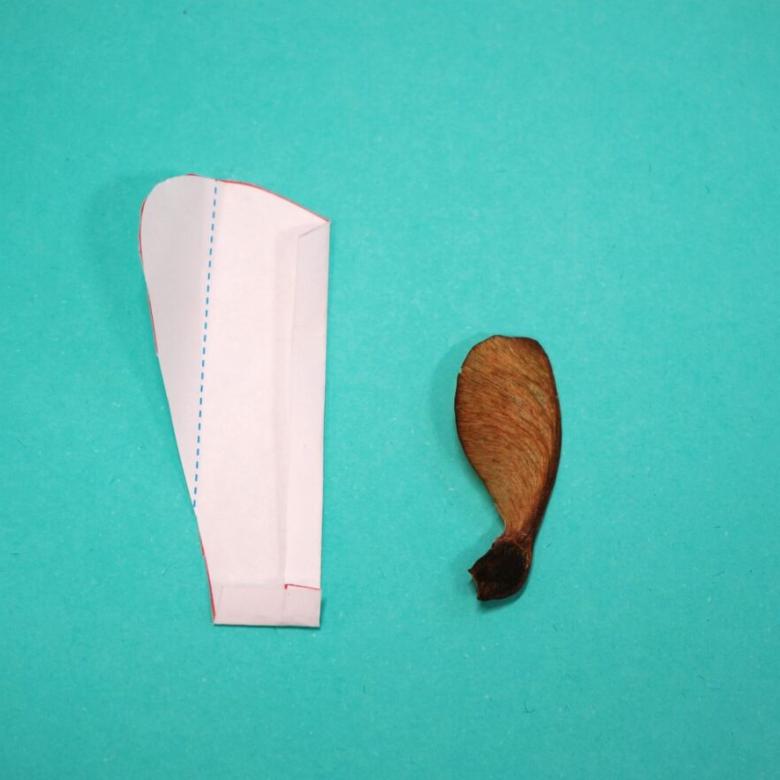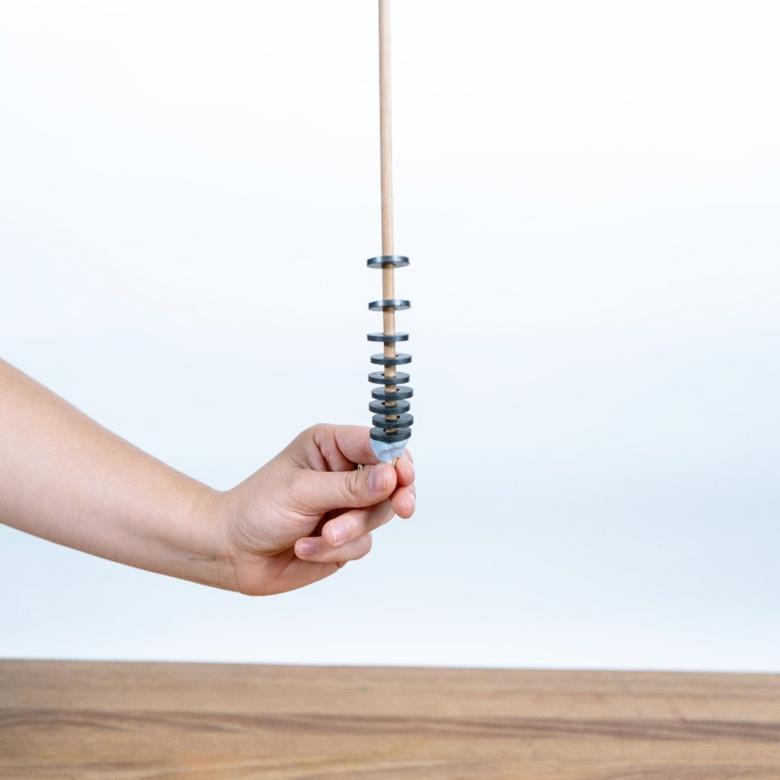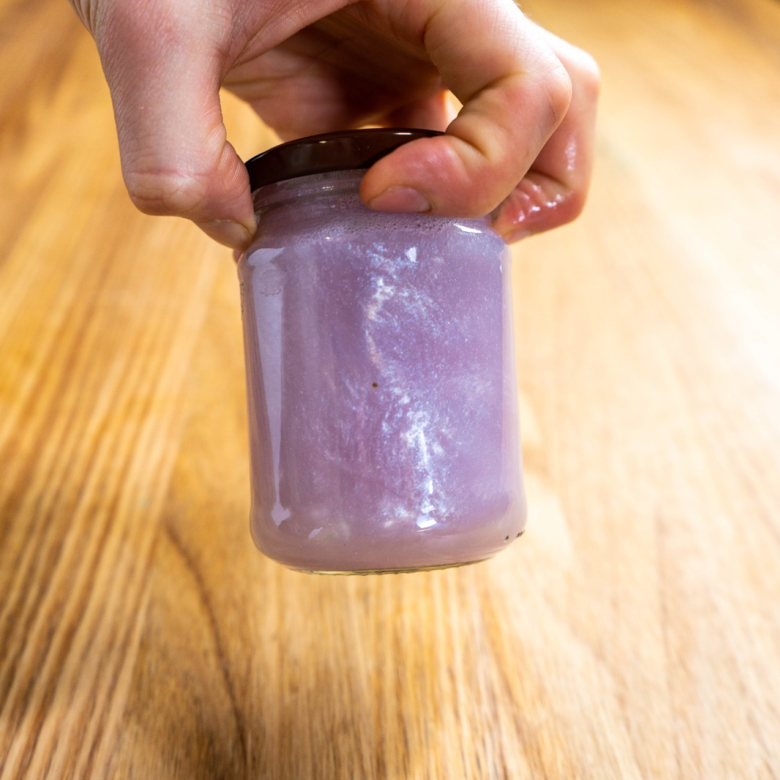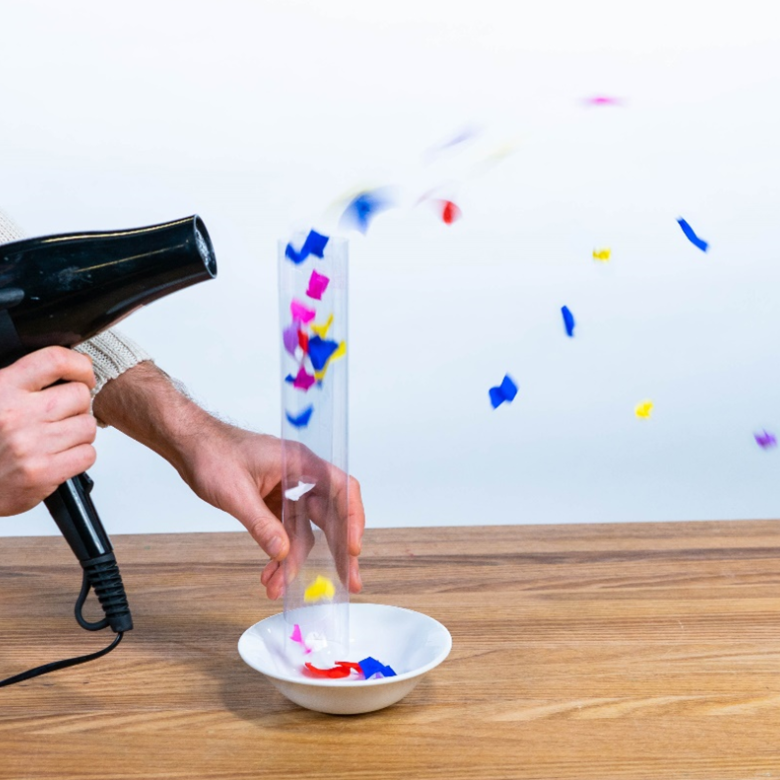You'll need
- Your own hair or a jumper
- An inflated balloon
- An empty, clean and dry aluminium can
What to do
- Rub the balloon on your hair or a jumper to give it a charge of static electricity. Dry, clean hair works best. You might need to rub the balloon on other people’s hair before you can build up enough charge.
- Slowly pull the balloon away from the hair. If the balloon is charged, hair will stick to it as you move it away. If the hair doesn’t move, keep rubbing the balloon on your hair or jumper.
- Lay the aluminium can on its side on a flat table where it has room to roll.
- Hold the charged balloon very close to the aluminium can. Do not let it touch the can or the table.
- Slowly move the balloon away from the can. The can will start to roll and follow the balloon!
Questions to ask
How far can you make the can roll? If it stops rolling, how can you make it roll again?
Do you think the material matters? Try the experiment using a toilet paper roll instead of a can.
What’s happening
Have you ever felt a painful ZAP! while jumping on a trampoline or getting out of a car? Have you ever walked past a television and all the hairs on your arms have stood on their ends but it wasn’t even cold? Well, have no fear – you were probably just an innocent victim of static electricity.
Static electricity also explains our balloon and can. When you rub the balloon on your hair, you move around tiny pieces of electricity called electric charges. There are 2 kinds of electric charges, positive and negative. By rubbing the balloon on your hair, you take negative charges from your hair and put them on the balloon. The balloon becomes negatively charged and the hair becomes positively charged. Positive and negative charges are attracted to each other. This makes the hair stick to the balloon.
Atoms are the source of static electricity. Atoms are the tiny pieces of matter that make up everything in our universe, like water, tables, rocks and you. You may have seen a picture of an atom which looks like a miniature solar system. In the middle is a positively charged nucleus (where the sun would be). Negatively charged electrons (the planets) orbit, or go around, the nucleus.
Normally, the positive charges in the nucleus balance out the negative charges of the electrons. This is called being neutral. But electrons aren’t stuck to a specific atom forever. Sometimes, one material may wipe electrons off another. The material that loses electrons becomes positively charged. The other material gains electrons and becomes negatively charged – like the balloon.
The can used in this experiment conducts electricity. Electrons can move through it, but the atoms, each with a positive nucleus, cannot. When the negative balloon is close to the can, it pushes some of the can’s electrons away (that is, it repels or repulses them). The near side of the can becomes a little bit positive, the far side a little bit negative. But the positive side is closer to the balloon than the negative side is. This means the attraction is stronger than the repulsion. That is why the can rolls towards the balloon.
Can this explain what you see when you repeat the experiment but use a cardboard tube?
Did you know
Lightning is caused by a build-up of static charge in clouds. You may have heard of Benjamin Franklin’s famous kite experiment in 1750. It’s said Franklin showed that clouds hold electrical charge by flying a kite during a lightning storm. It is unlikely however that Franklin flew his kite in an actual lightning storm, because a lightning strike to his kite would probably have killed him.
(Sound of bubbles popping).
Rachel: Hi my name’s Rachel, and I’m from the Questacon Science Squad and today we’re going to show you how you can move an aluminium can using just a balloon.
(Camera zooms in on can and balloon).
So take one aluminium can and one balloon.
(Camera zooms back on to Rachel who picks up the balloon).
Excuse me while I just blow this up
(Rachel bends down under the table and produces a blown up balloon).
Now what you need to do is take the balloon and either rub it on your hair
(Rachel rubs the balloon on her hair)
or a woollen jumper, or like I have behind me, a piece of felt
(points at the felt).
Rub it for at least ten seconds
(Rachel is rubbing balloon on the felt behind her).
Next what you need to do is lie the can on the side
(Rachel lies the can on its side)
and hold the part of the balloon that you were rubbing, close to the can and watch it roll
(puts the balloon close to the can).
(Camera follows the can rolling along the table).
If you’d like to know how the aluminium can was rolling with just a balloon, visit our website. See you next time.






